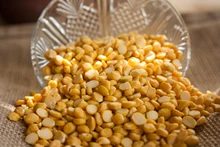
Kafal (Bayberry), scientifically known as Myrica esculenta, is a versatile evergreen plant found in the mid-Himalayas, thriving at altitudes between 1,300 to 2,100 meters. This plant also referred to as bayberry or box myrtle, holds significant ecological and economic value across its native range, encompassing the Khasi hills of Meghalaya, Assam, Arunachal Pradesh, and beyond into Southeast Asia.
Botanical Description
-
Kafal is characterized by its small to moderate size, typically reaching heights of 10 to 15 meters with a trunk diameter of 80 to 95 cm.
-
The bark is rough and brownish, while the leaves are lanceolate to obovate, densely clustered towards the ends of branches. The tree is dioecious, meaning male and female flowers are borne on separate plants.
-
Male flowers appear in reddish catkins, whereas female flowers are slender spikes or occasionally borne at the end of male spikes.
Climate and Soil
-
Kafal thrives in sub-temperate to temperate climates, found at altitudes ranging from 1,300 to 2,100 meters.
-
It prefers well-drained soils ranging from shallow loamy brown forest podzolic soil to deeper, loamy to clayey red lateritic soils.
-
The ideal pH range for growth is between 5.5 to 6.5.
-
The plant requires a mean annual rainfall of 500 to 1500 mm and temperatures between 25 to 35 °C during summer and 2 to 12 °C during winter months.
Sowing Time
-
Seeds of Kafal are best sown during the spring season, typically around March-April, when temperatures are moderate and conducive to seed germination.
-
Prior to sowing, seeds can be treated with hot water to break seed dormancy, enhancing germination rates.
-
Sowing should be done in well-prepared soil beds or containers filled with a mixture of forest soil and sand.
Cultivation Practices
-
Kafal cultivation begins with selecting healthy seeds and preparing suitable nursery beds or containers.
-
After sowing, seeds require regular watering and protection from direct sunlight until seedlings emerge.
-
Once seedlings are robust enough, they can be transplanted into the main field with a spacing of about 4 to 5 meters between plants.
-
Regular weeding, mulching, and occasional pruning are essential for maintaining tree health and promoting fruit production.
Harvesting
-
Kafal plants typically start fruiting 6 to 8 years after planting. Flowering occurs from late October to December, with fruits ripening from April to June.
-
Harvesting should be done manually, carefully picking ripe fruits to avoid damage.
-
Fruits are highly perishable and should be handled gently to preserve quality.
-
Harvested fruits can be used fresh or processed into various products like jams, jellies, and beverages.
Fruits and Utilization
-
Kafal fruits are valued for their sweet and slightly sour taste, making them popular for direct consumption as well as culinary preparations.
-
The pulp, which constitutes about 75.4% of the fruit, is rich in carbohydrates, dietary fiber, and antioxidants like ascorbic acid and flavonoids.
-
Traditional uses include making refreshing drinks, jams, and pickles, while the fruit's medicinal properties are utilized in indigenous medicine for treating ailments such as asthma, diarrhea, and fever.
Traditional and Medicinal Uses
-
In traditional medicine systems like Ayurveda and Unani, various parts of the Kafal plant, including the bark and leaves, are used for their therapeutic properties.
-
The bark is known for its astringent and antiseptic qualities, used to treat respiratory conditions, gastrointestinal disorders, and skin ailments.
-
Extracts from different parts of the plant are also used in folk remedies across the Himalayan region.
Potential for Commercialization and Economic Benefits
-
Despite being underutilized, Kafal holds significant potential for commercial cultivation and economic empowerment of rural communities.
-
Its fruits and derived products have a niche market due to their nutritional value and unique flavor profile.
-
Establishing processing units for value-added products like nutraceutical beverages, jams, and cosmetics could enhance marketability and generate additional income for growers.
-
Furthermore, promoting Kafal cultivation through awareness programs, research on crop improvement, and development of superior varieties can unlock its full economic potential.











